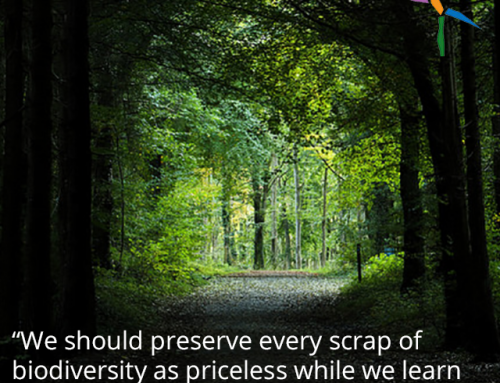Valentine’s Day (or night or month) dates. They are a staple of the American (and increasingly global) experience. And there are some that are more common than others. But, of course, nobody will deny that one of the most common Valentine’s Day dates is to see the romantic comedy film (RomCom) dujour. It allows you to enjoy the idea of romance without it being overblown, laugh together and probably also sit a little close to each other in a darkened theater. Or if you’re a single guy or gal, it gives you a chance to hang out with friends and enjoy the lighter side of Valentine’s Day. And we’ll confess to enjoying a few particularly good RomComs ourselves. But before you decide to head to the movie theater this Valentine’s Day, let’s add up the carbon footprint of going to see a RomCom (and of course offer you some greener alternatives).
For Now, Let’s Overlook the Carbon Footprint of Actually Making the Movie
While Hollywood is getting better and better at incorporating green and eco-friendly practices into movie making, there’s still a massive carbon footprint associated with energy needs, set construction, craft services, props, makeup and just about every element of making a movie. But while RomComs are guilty of generating waste and carbon emissions just so we can enjoy ninety minutes of escapism, they’re not nearly the biggest offenders in Hollywood. Summer blockbuster action films are films you should think about not seeing if you want to make a hard environmental stance. RomComs are on the light end of the scale. So while making them leaves a footprint, at least it’s not the most absurd footprint that we’ve ever seen.
Movie Miles: Getting To and From
There aren’t many dates that you can go on that won’t involve some “miles” to get there and back. However, considering that in most places the nearest larger Cineplex is at a mall or in a suburb, going to the movies can be an event that really adds on the driving miles. You can ignore this section if you’re living in a city where you can easily take a metro or bus to the movies, but otherwise take into account the time in the car when thinking about your carbon footprint. As a way to negate this, consider public transportation if at all available. Yes, it’s probably not as romantic, but on the upside it will almost certainly give the two of you something to talk about. Or, see our best option for RomComs without the carbon footprint at the end of this article.
Chances Are That Your Cineplex is Not Using Green Energy
Take a moment to pause and think about all of the energy needed to run lights, temperature control, projection, sound, concessions and general utility needs for a large scale movie theater. It’s a lot, right? And the chances that your local Cineplex has solar panels installed or is using a green source of energy is fairly low. In fact, we just did some basic research and we can pretty much assure you that within the United States it is just a handful of locations. Obviously, energy consumption is going to be used almost anywhere you go. But larger Cineplexes use a lot of energy and they don’t seem to be interested in or making an effort to use a greater percentage of clean energy so far.
Concessions: Such a Huge Carbon Footprint Offender
Concessions would be a carbon footprint offender just about anywhere you went. Just consider for a moment the number of paper cups and plastic cup lids that go directly to a trash can most places that concessions are served (though we applaud the fact that some movie theaters are at least making some effort to encourage patrons to recycle). What takes movie theater concession waste over-the-top is that the sizes of concessions at movie theaters are absurd. A small popcorn could feed a family dinner in some countries and it’s entirely possible to buy a “cup” of soda that is an entire two liters. We’re going to ignore the consumerism implications of this sizing (as well as the health implications) and just say that more volume quite frankly equals more waste. Eat before you go to see your RomCom or be naughty and sneak your own snacks in.
But Speaking of Consumerism…
You can’t really separate consumerism from eco-issues, and movies at the Cineplex come with a heaping dose of addictive consumerism. Even if you leave out all of the merchandise that’s sold to correspond with most movies these days, you’ll still end up with tons of pre-movie commercials and product placement within the movie itself sending you materialism messages about the need to associate your value as a person with the stuff that you own and the need to buy more, more, more. Even if it’s not as overt as the eco-issues associated with the overall operations of the Cineplex, these consumer messages are, at base, what drives much of the environmental opulence of current society.
So What’s a Better Alternative?
We’re not going to deny that seeing a RomCom on Valentine’s Day can be a fun date, and certainly you need to find your own happy spot on the consumerism and eco-friendly scale. However, if you want to tone down the carbon footprint of watching a RomCom with your sweetie, the answer is simple. Stay in and rent one. You’ll be able to use less energy (and in your own home you’ll also have the option of choosing a greener energy provider). You’ll have control over the eco-impact of your food and likely bypass takeout containers altogether. And of course you’re eliminating at least one set of travel miles. Plus, rented movies don’t have commercials before them! As an added benefit, there’s an increased ability to snuggle without being that couple having the annoying Valentine’s Day PDA.
We love a fun RomCom, but we also think that making informed decisions is important too. If a RomCom in a theater for Valentine’s Day is your idea of a perfect evening, just go into the evening armed with this carbon footprint summary so that you can make small choices throughout the night to reduce the waste associated with seeing movie theater films.
Did we miss a fact about the carbon footprint of RomCom movies that you want to share with us? If so, just tell us about it on one of the social media channels below.
Facebook | Twitter | Instagram | Tumblr | Pinterest | Google+





